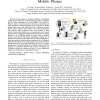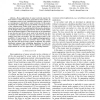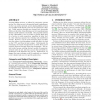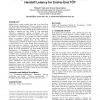430 search results - page 57 / 86 » Securing Layer 2 in Local Area Networks |
ICDCS
2011
IEEE
12 years 7 months ago
2011
IEEE
—In this paper, we propose E-Shadow, a distributed mobile phone-based local social networking system. E-Shadow has two main components: (1) Local profiles. They enable EShadow u...
RTSS
2007
IEEE
14 years 2 months ago
2007
IEEE
— Many applications of sensor networks require the base station to collect all the data generated by sensor nodes. As a consequence many-to-one communication pattern, referred to...
CCS
2006
ACM
13 years 11 months ago
2006
ACM
Location-hidden services, as offered by anonymity systems such as Tor, allow servers to be operated under a pseudonym. As Tor is an overlay network, servers hosting hidden service...
SIGCOMM
2005
ACM
14 years 1 months ago
2005
ACM
We consider wireless LANs such as IEEE 802.11 operating in the unlicensed radio spectrum. While their nominal bit rates have increased considerably, the MAC layer remains practica...
MOBICOM
2003
ACM
14 years 1 months ago
2003
ACM
Handoff latency results in packet losses and severe End-to-End TCP performance degradation as TCP, perceiving these losses as congestion, causes source throttling or retransmissio...




